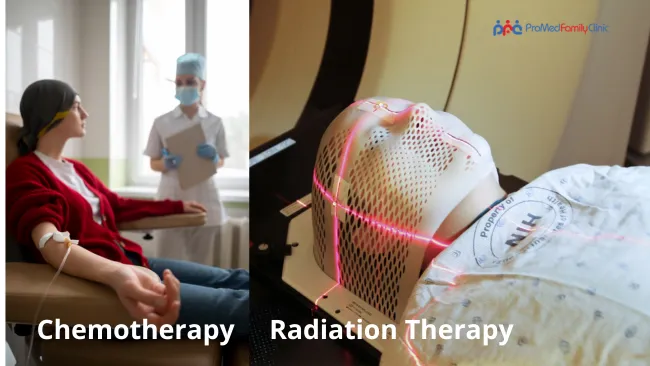Exploring Effective Cancer Treatment Options for Different Types of Cancer
Cancer treatment, such as chemotherapy and radiation therapy, can be life-saving, but they often come with side effects. These side effects can vary in intensity and duration, impacting the physical and emotional well-being of patients. In this article, we will explore the common side effects of chemotherapy and radiation therapy, along with effective techniques for pain management. By understanding these side effects and learning about appropriate management strategies, patients and caregivers can improve their quality of life during cancer treatment.
Side Effects of Chemotherapy:
Chemotherapy is known for its potential side effects, which can vary depending on the specific drugs used and individual factors. Common side effects include hair loss, nausea, vomiting, fatigue, lowered blood cell counts, and increased risk of infections. Additionally, chemotherapy can affect the gastrointestinal system, causing diarrhea or constipation. It is important for patients to communicate openly with their healthcare team about any side effects experienced, as timely intervention and support can help manage and alleviate them.
Side Effects of Radiation Therapy:
Radiation therapy, while targeted to specific areas, can also lead to side effects. The nature and severity of these side effects depend on factors such as the treatment site, the dose of radiation, and the individual's overall health. Skin reactions, fatigue, and localized pain or discomfort are common side effects of radiation therapy. Long-term effects, such as fibrosis or damage to nearby organs, are possible but occur less frequently. Close communication with the radiation oncology team can aid in addressing and managing these side effects effectively.
Effective Pain Management Techniques:
Pain management is a crucial aspect of cancer treatment, as patients may experience pain due to the disease itself, invasive procedures, or treatment side effects. Several techniques can help alleviate pain and improve quality of life for cancer patients. These include pharmacological approaches, such as pain medications and nerve blocks, as well as non-pharmacological methods like physical therapy, acupuncture, relaxation techniques, and counseling. A multidisciplinary approach, involving collaboration between oncologists, pain specialists, and supportive care teams, can ensure comprehensive pain management tailored to the individual's needs.
Conclusion:
While chemotherapy and radiation therapy are vital components of cancer treatment, they can come with side effects that may impact patients physically and emotionally. Understanding and effectively managing these side effects are crucial for enhancing the quality of life during and after treatment. By being aware of potential side effects of chemotherapy and radiation therapy, patients and caregivers can proactively communicate with their healthcare teams, seek appropriate support, and explore various pain management techniques available. With proper management, patients can focus on their treatment journey with increased comfort and well-being, empowering them to navigate through their cancer treatment with resilience and optimism.
Protect your skin, consult a Skin GP for sun safety!
You May Also Like:
Promed offer Other Services Such as;
